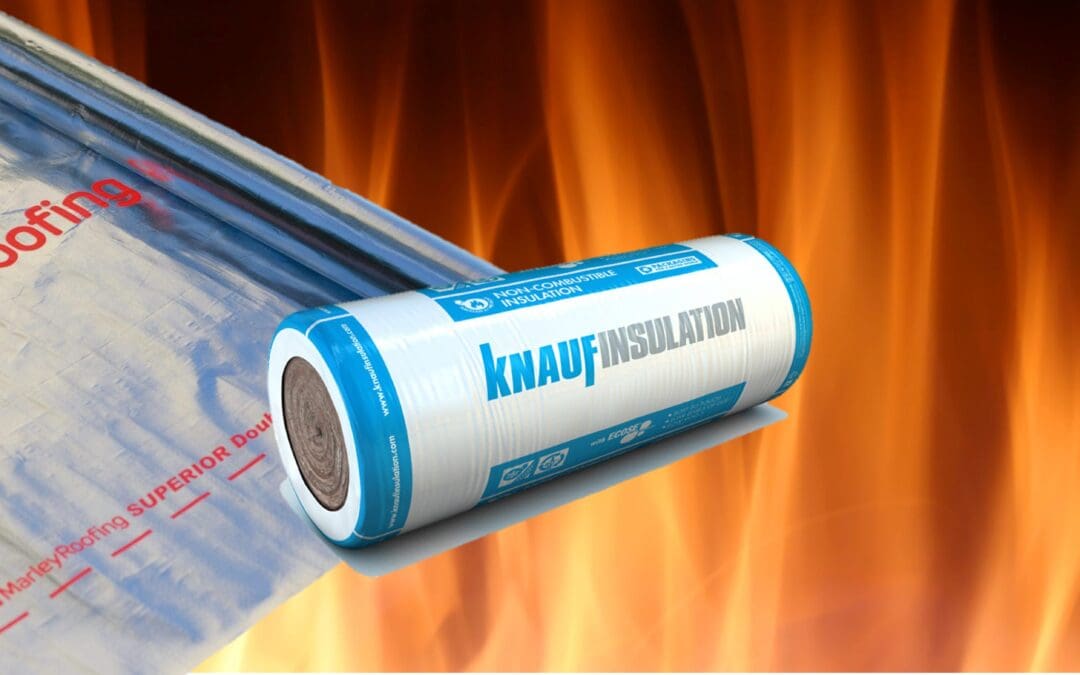What’s the fuss?
In December 2024, SANS (South African National Standard) 10400-T: Fire Protection, underwent an important revision, impacting the fire protection classification of thermal insulation materials used in building construction.
Simply put, this legislation is concerned with the need for all buildings to be designed, constructed and equipped so that in the event of fire:
a) the protection of occupants or users, including persons with disabilities, therein is ensured and that provision is made for the safe evacuation of such occupants or users;
b) the spread and intensity of such fire within such building and the spread of fire to any other building will be minimized;
c) sufficient stability will be retained to ensure that such building will not endanger any other building: Provided that in the case of any multi-storey building no major failure of the structural system shall occur;
d) the generation and spread of smoke will be minimized or controlled to the greatest extent reasonably practicable; and
e) adequate means of access, and equipment for detecting, fighting, controlling and extinguishing such
fire, is provided.
SANS 10400: T consist out of many different sub-standards that relate to different aspects of the main standard like: Fire Fighting Equipment, Fire Extinguishers, Safety Signs, Handling and storage of liquified petroleum etc.
Out with old SANS 428 and in with the new SANS 53501-1
One of the main changes within SANS 10400-T, is the sub-standard SANS 428: Fire performance classification of thermal insulated building envelope systems that has migrated to the more comprehensive SANS 53501-1 which has taken effect on the 1st of January 2025, and is based on the European National Standard: EN13501-1: that classifies how building products and elements react to fire. It’s also known as the Euroclass system.
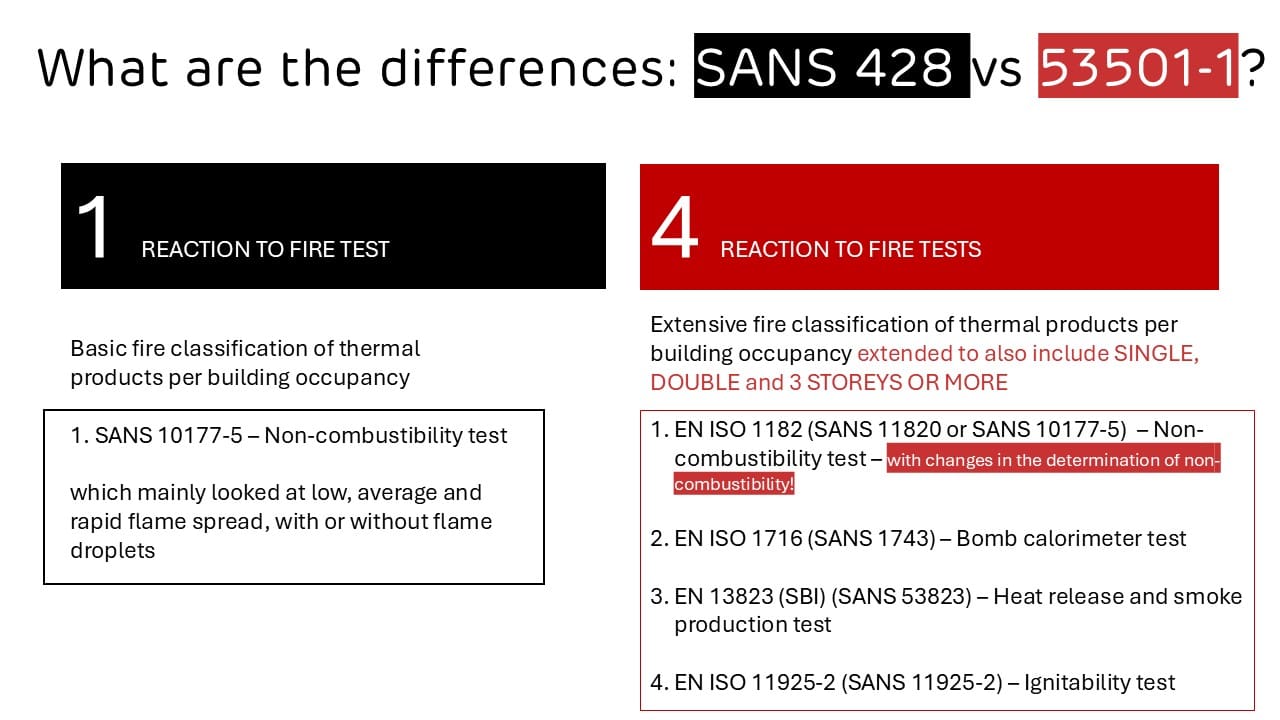
Why?
This change means that by aligning with SANS 53501-1, South Africa’s insulation products will meet “Euro-class” standards, making it easier for local manufacturers to compete in international markets. The new reaction to fire test are also more comprehensive, contributing to a greater improvement with regards to fire protection.
Main differences between SANS 428 vs SANS 53501-1?
With SANS 428, only one reaction-to-fire test was required – SANS 10177-5: Non-combustibility test, which mainly looked at low, average and rapid flame spread, with or without flame droplets.
With the introduction of SANS 53501-1, four key reaction-to-fire tests are required for wall, ceiling, and roof insulation products. These tests are designed to assess how materials react to fire, focusing on their combustibility, heat release, smoke production, and ignitability.
TEST 1; Still including a non-combustibility test, but with changes in the determination of non-combustibility – the first test SANS 11820 is based on EN ISO 1182. During non-combustibility testing, the specimen is placed in a single zone furnace with a maximum operating temperature of 750⁰C and possible burning events are monitored with thermocouples. If the test specimen burns, the flaming time is also measured. Class A1 materials are not allowed to experience sustained flaming for more than 5 seconds and not rise in temperature above 30⁰C. For class A2 materials, flaming must stop within 20 seconds and not have a temperature rise greater than 50⁰C. Both A1 and A2 materials can’t experience a mass loss greater than 50%.If a material, such as KNAUF Ceiling Roll is classified as A1: Non-combustible, no further tests are required and such as material may be used in all building occupancy classes.
TEST 2: SANS 1743 is based on EN ISO 1716 a bomb calorimeter test. An oxygen calorimeter, also known as a bomb calorimeter, works by placing a sample of material inside a pressurized chamber (the “bomb”) filled with oxygen, then igniting the sample, causing it to combust and release heat which is absorbed by a surrounding water bath; by measuring the temperature change of the water, the calorimeter can calculate the heat energy released by the combustion reaction. Other than being used to determine the calorific value of your hamburger, this test is also used to compute the fire growth potential of the combustible solid.
TEST 3: SANS 53823: Heat release and smoke production test, is based on EN 13823 (SBI). The Single Burning Item (SBI) is a method of test for determining the reaction to fire behavior of building products (excluding floorings) when exposed to the thermal attack by a single burning item (a sand-box burner supplied with propane). The basis of the research for the SBI test was the correlation between the performance of the SBI and the time to reach flashover (the rapid transition point in a fire where all combustible surfaces within a test room simultaneously ignite, essentially marking the moment when the fire fully develops and engulfs the entire compartment, signifying a critical stage in fire progression where the heat release rate reaches a high level and all surfaces within the room are actively burning) in the room corner test (ISO 9705).
TEST 4: SANS 11925-2: Ignitability test with small flame, is based on EN ISO 11925-2. This test measures the ignitability of building materials when exposed to a small flame, to evaluate a material’s response to the initial stages of fire exposure. The Single Flame Source Test is built in accordance with “SANS 11925-2: Reaction to fire tests for building products – Part 2: Ignitability when subjected to direct impingement of flame”. The apparatus is based on the German Kleinbrenner (small burner) method for determining ignitability of building products in the vertical orientation by direct small flame impingement under zero impressed irradiance (without daylight).
Class of occupancy changes!
Another main change relates to the class of occupancy – SANS 10400 A – regulation A20 – classification and designation of occupancies relevant to SANS 10400 T (Fire Protection) that has been extended beyond basic occupancies to include 1, 2, 3 and more storey buildings.
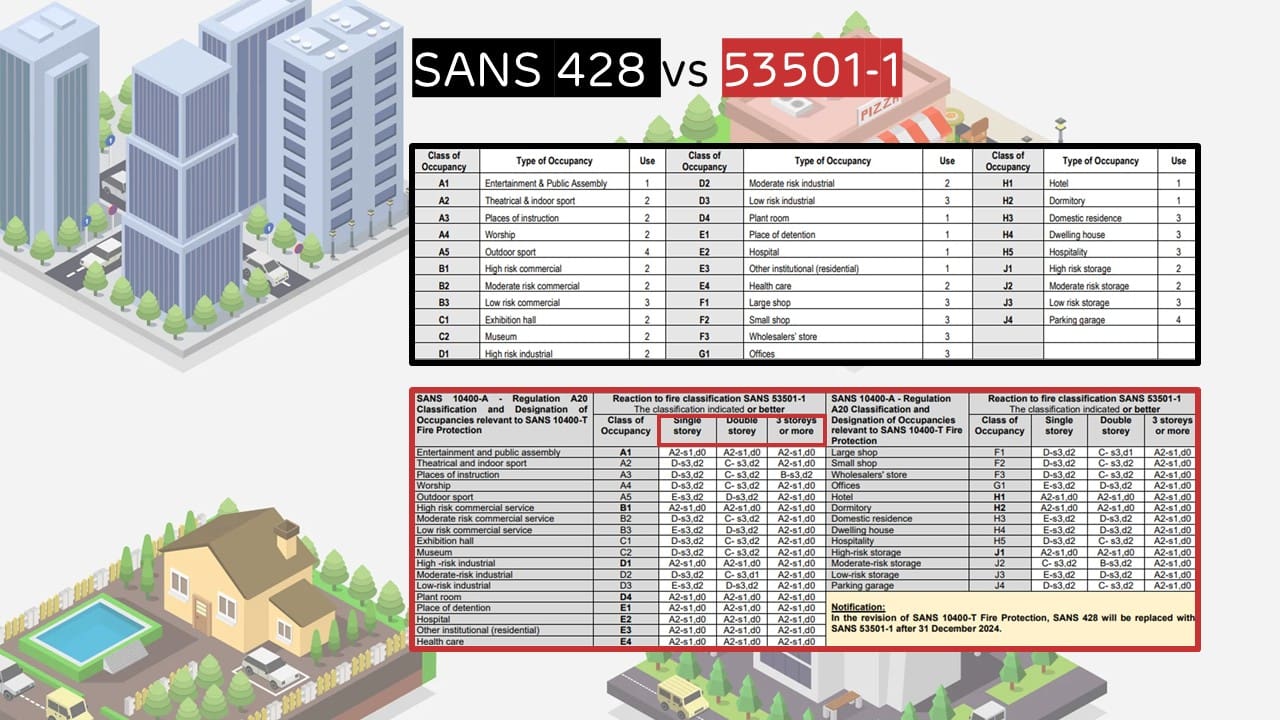
What is Building Occupancy Classification?
This regulation provides a system to categorize buildings based on their primary use, such as residential, commercial, industrial, educational, healthcare, etc. Fire Safety Implications: By classifying building occupancies, it allows for tailored fire safety design requirements to be applied based on the potential fire risk associated with the building’s intended use. Integration with SANS 10400-T: When designing fire protection systems for a building, referencing the occupancy classification from SANS 10400-A (Regulation A20) is essential to ensure appropriate fire safety measures are implemented.
Fire Classification SANS 428 (prior 2025) vs SANS 53501-1
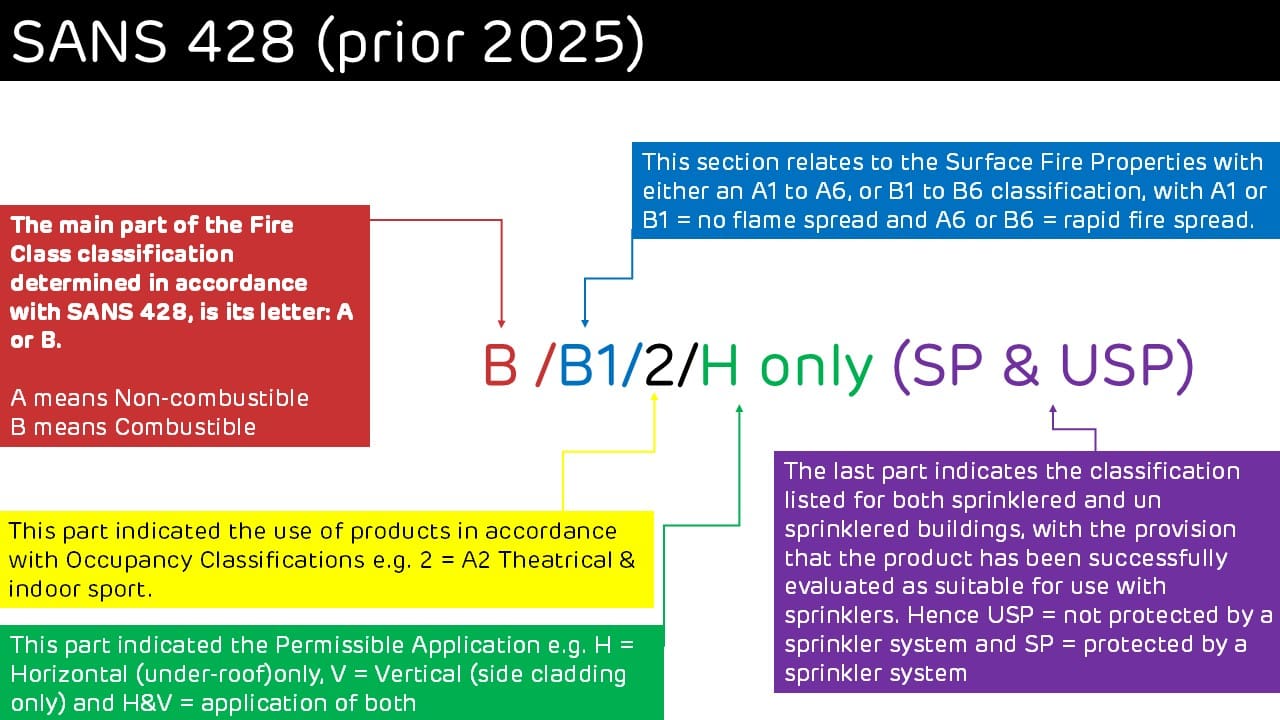
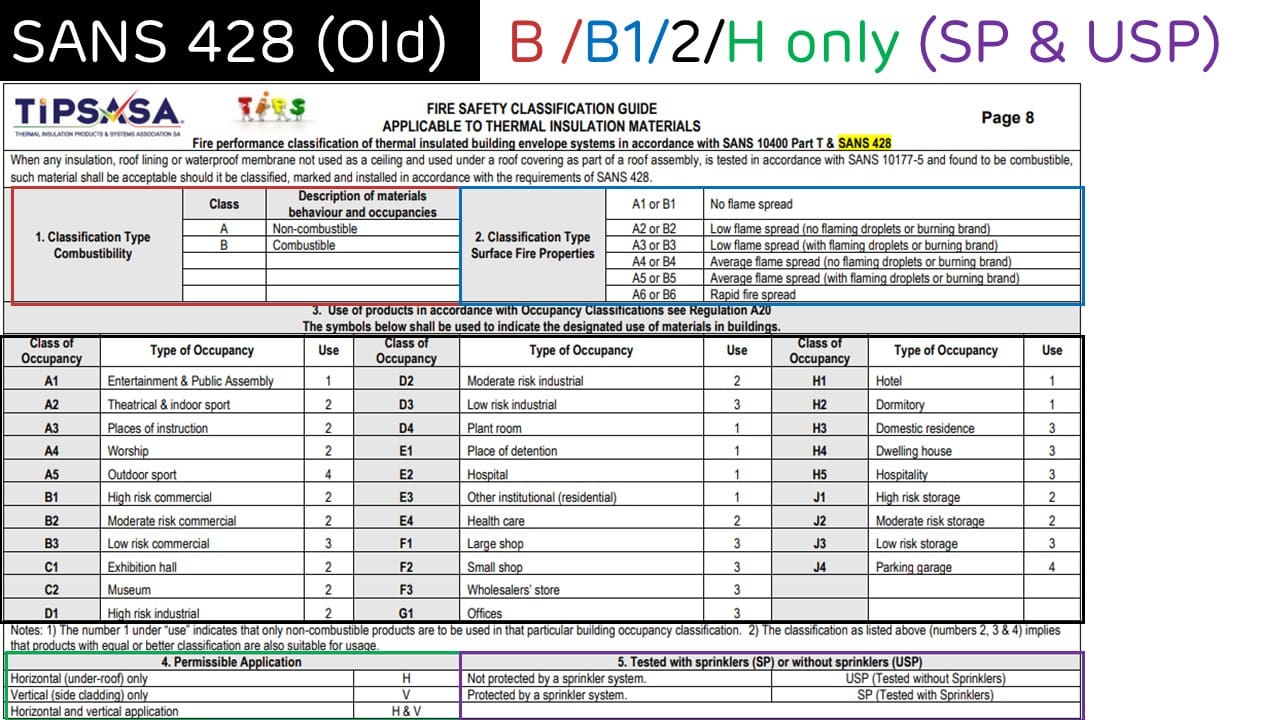
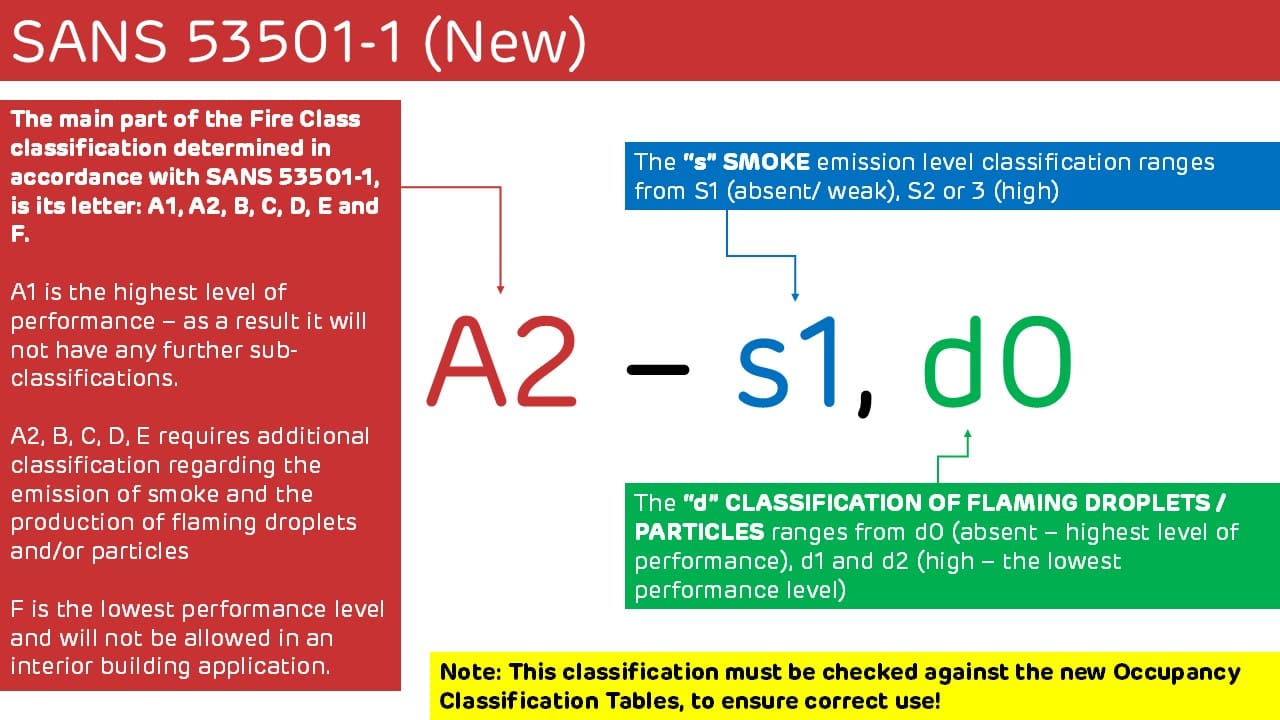
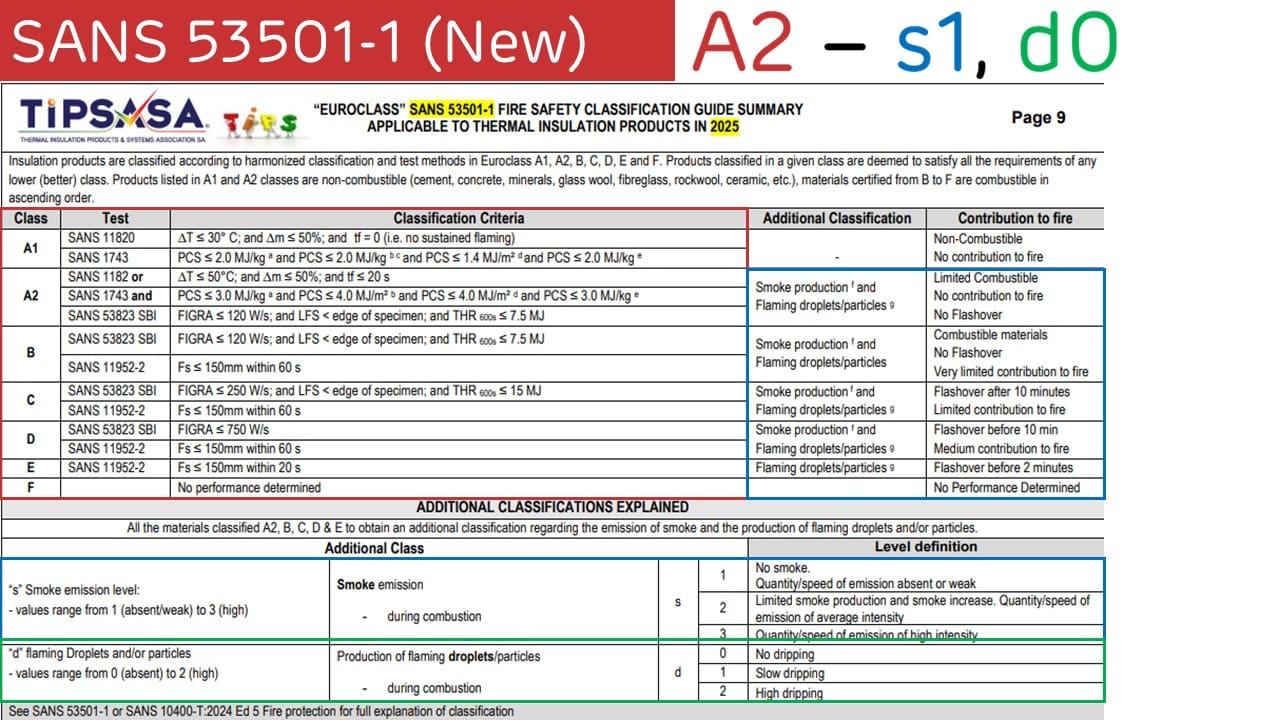

We’ve made it easy to specify the correct insulation system and we are saving you money!
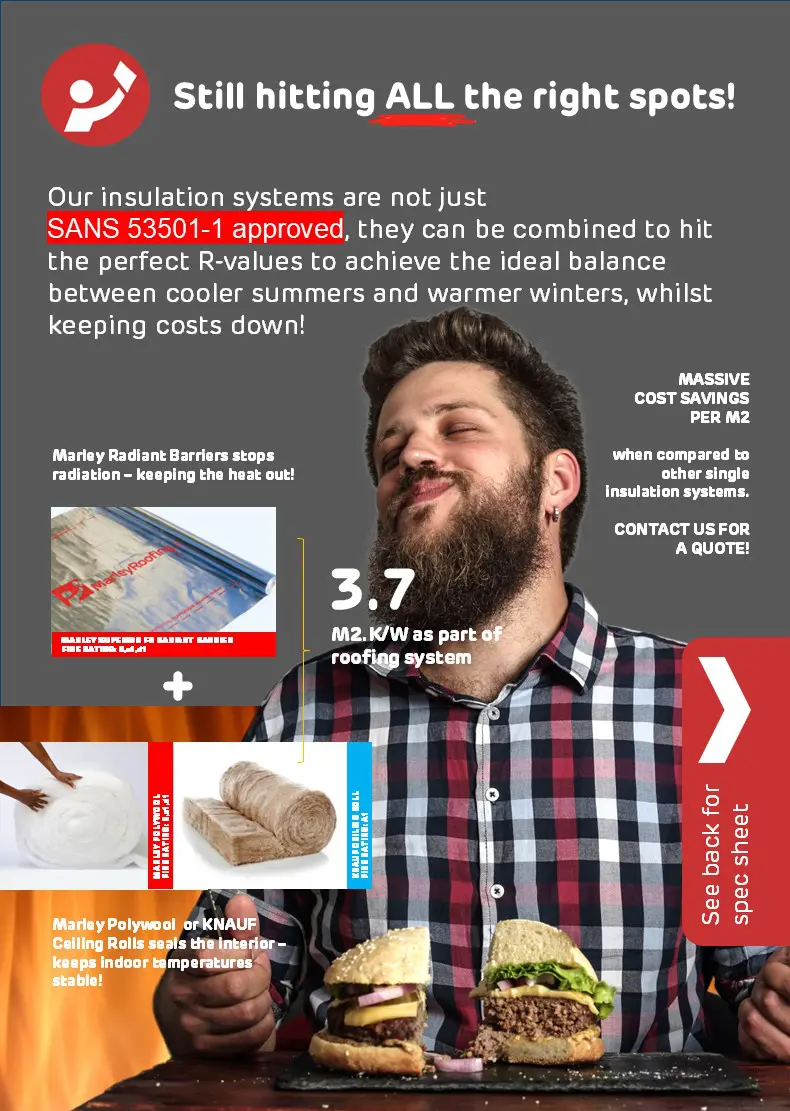
Marley Roofing’s insulation systems are not just SANS 53501-1 approved, they can be combined to hit the perfect R-values to achieve the ideal balance between cooler summers and warmer winters, whilst keeping costs down!
With our dual insulation system – using our Marley FR Superior Radiant barrier with B, s1,d1 fire rating and combining it with either Marley Polywool with B,s1,d1 fire rating (*registered as Fabufill) or KNAUF ceiling roll with A1 fire rating, you will be able to meet most residential type occupancies up to two stories high and save massive costs per square meter whilst achieving the ideal balance between blocking the heat in summer and keeping it in during the winter.
For all other occupancies 3 storeys and higher, Marley proudly supplies KNAUF Ceiling Rolls with a fire rating of A1
Using our spec sheet below, apply these simple steps to ensure you apply the correct insulation per building occupancy.
- Step 1: Depending on the region where your project is based, select the correct energy zone with its relevant minimum deemed to satisfy R-value for insulation.
- Step 2: Determine the lowest deemed to satisfy fire performance classification for the building occupancy type and number of storeys for your project.
- Step 3: Select an insulation system that meets the minimum required R-value and Fire Performance classification, as well as the one that provides the best performance with the most economical cost per square meter.
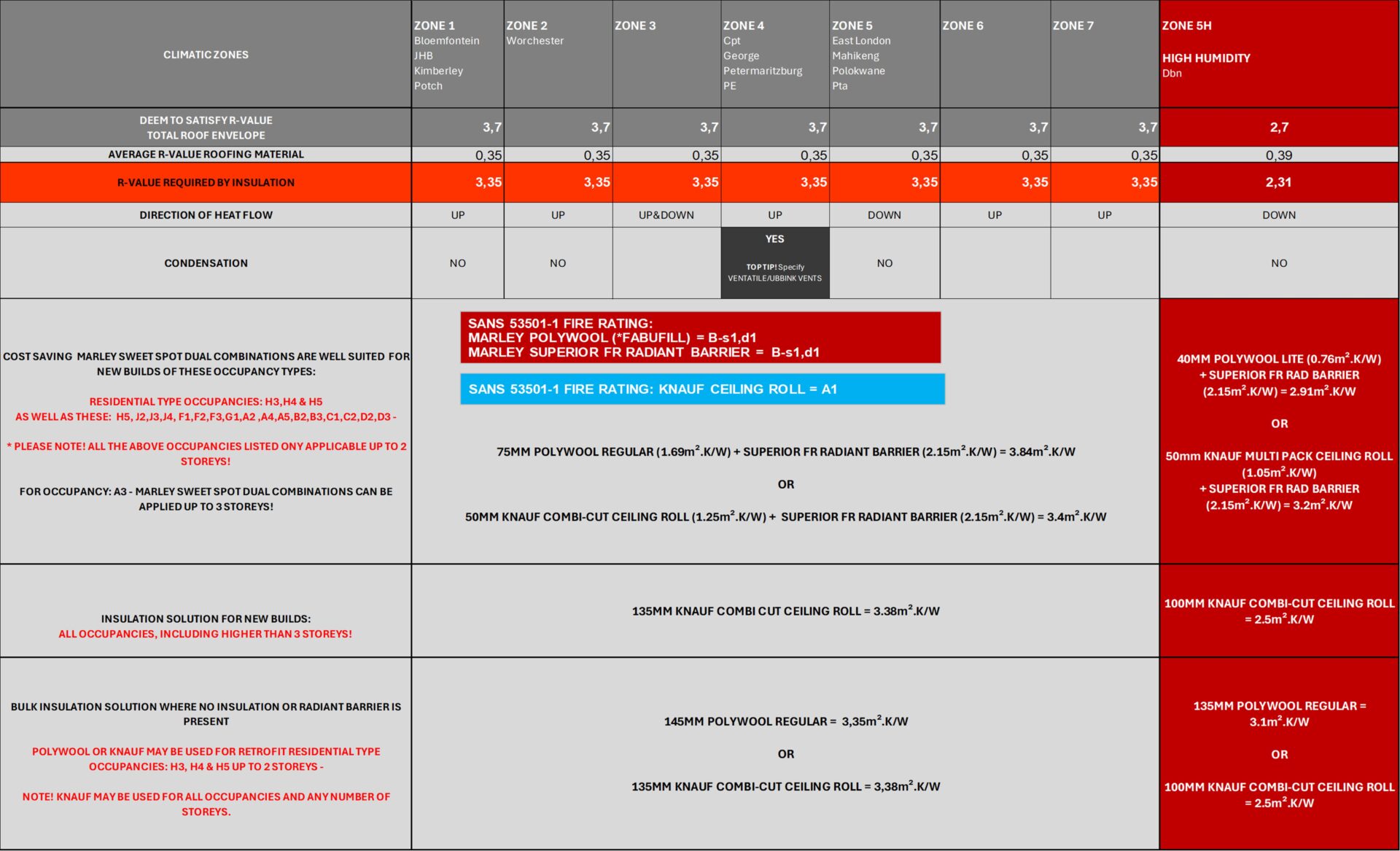
If you are not familiar with any of the terms used in this content, or national standards pertaining to the correct application of insulation products, please consult TIPSASA’s website for the newest:

